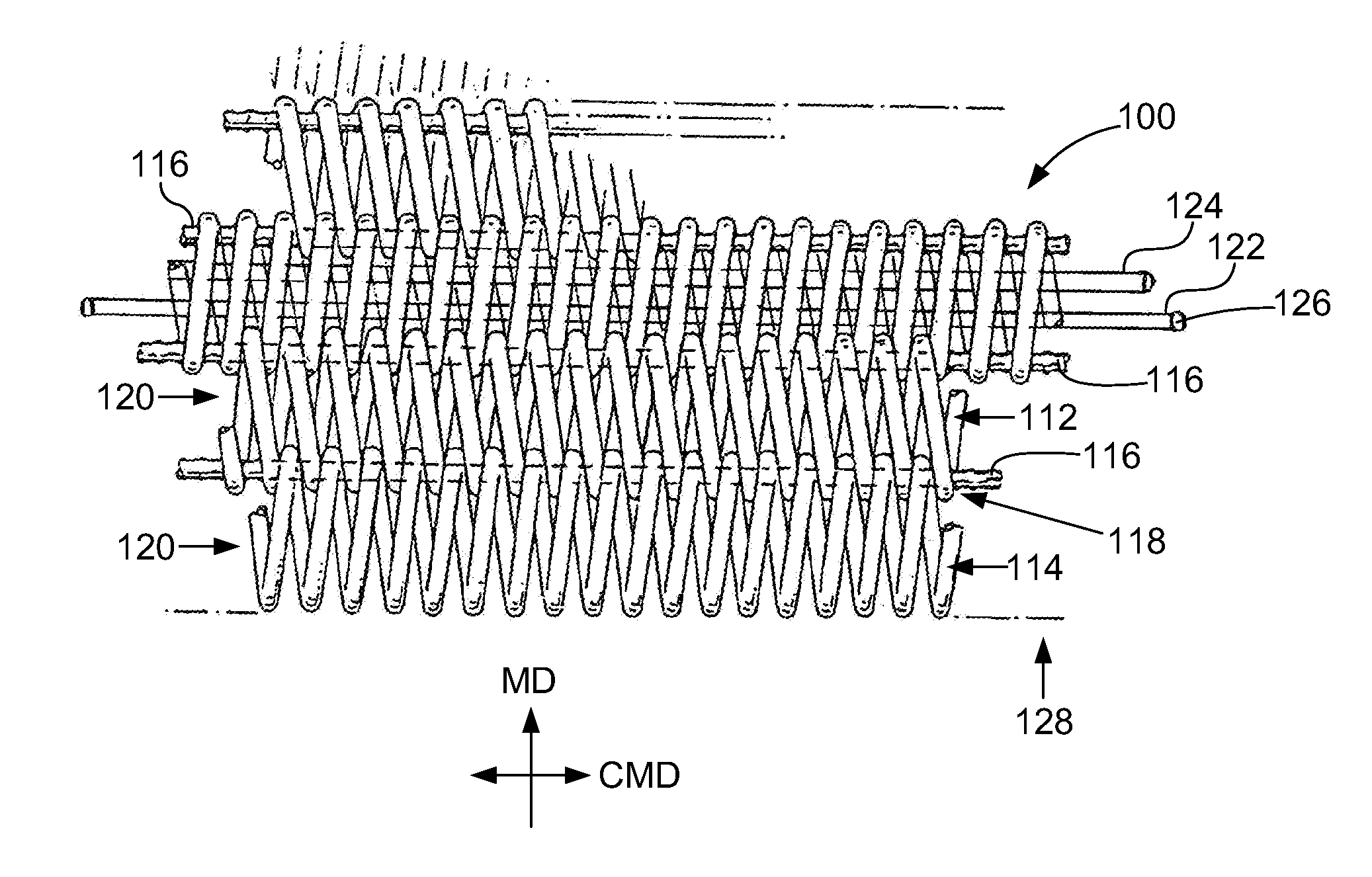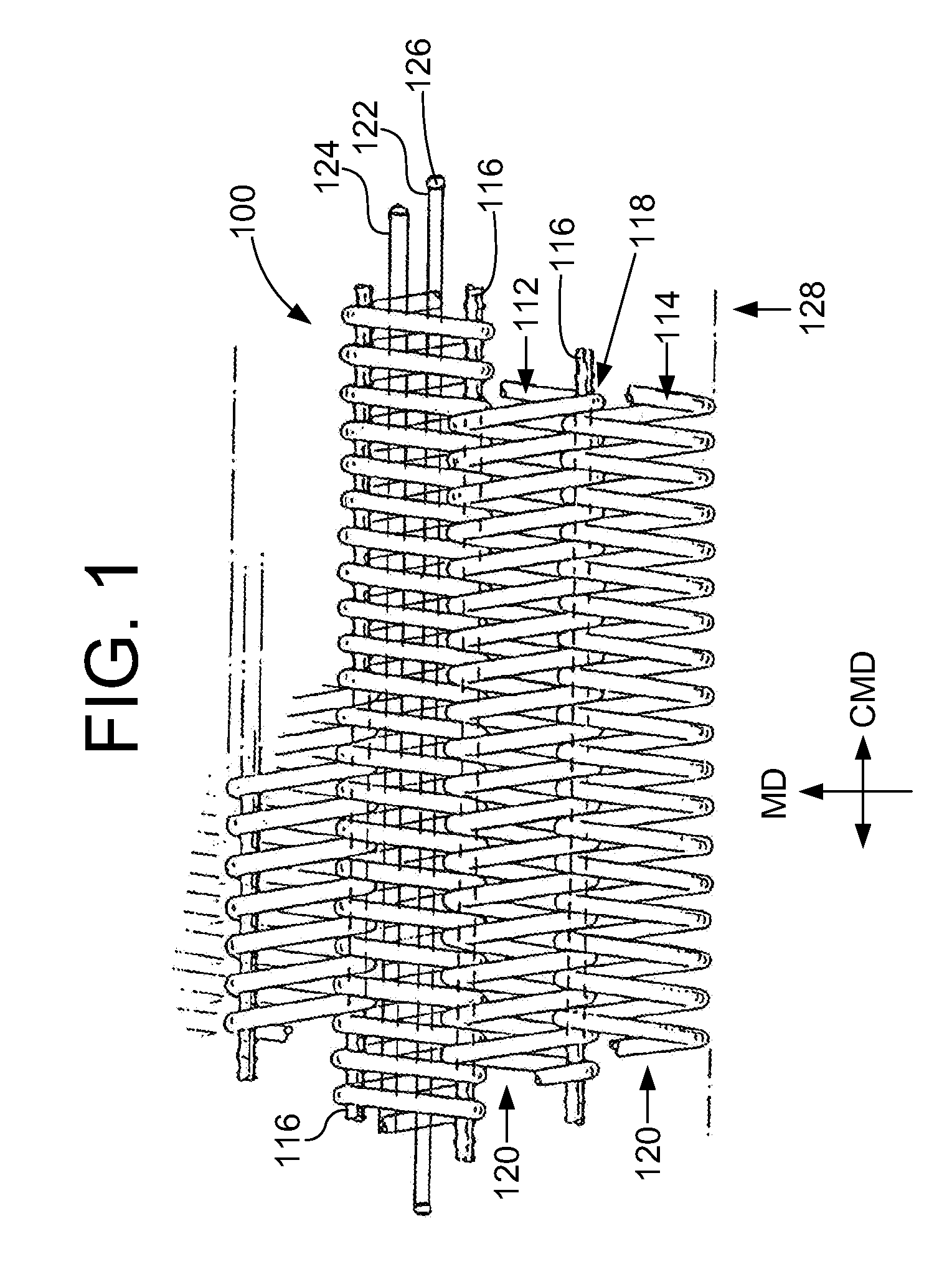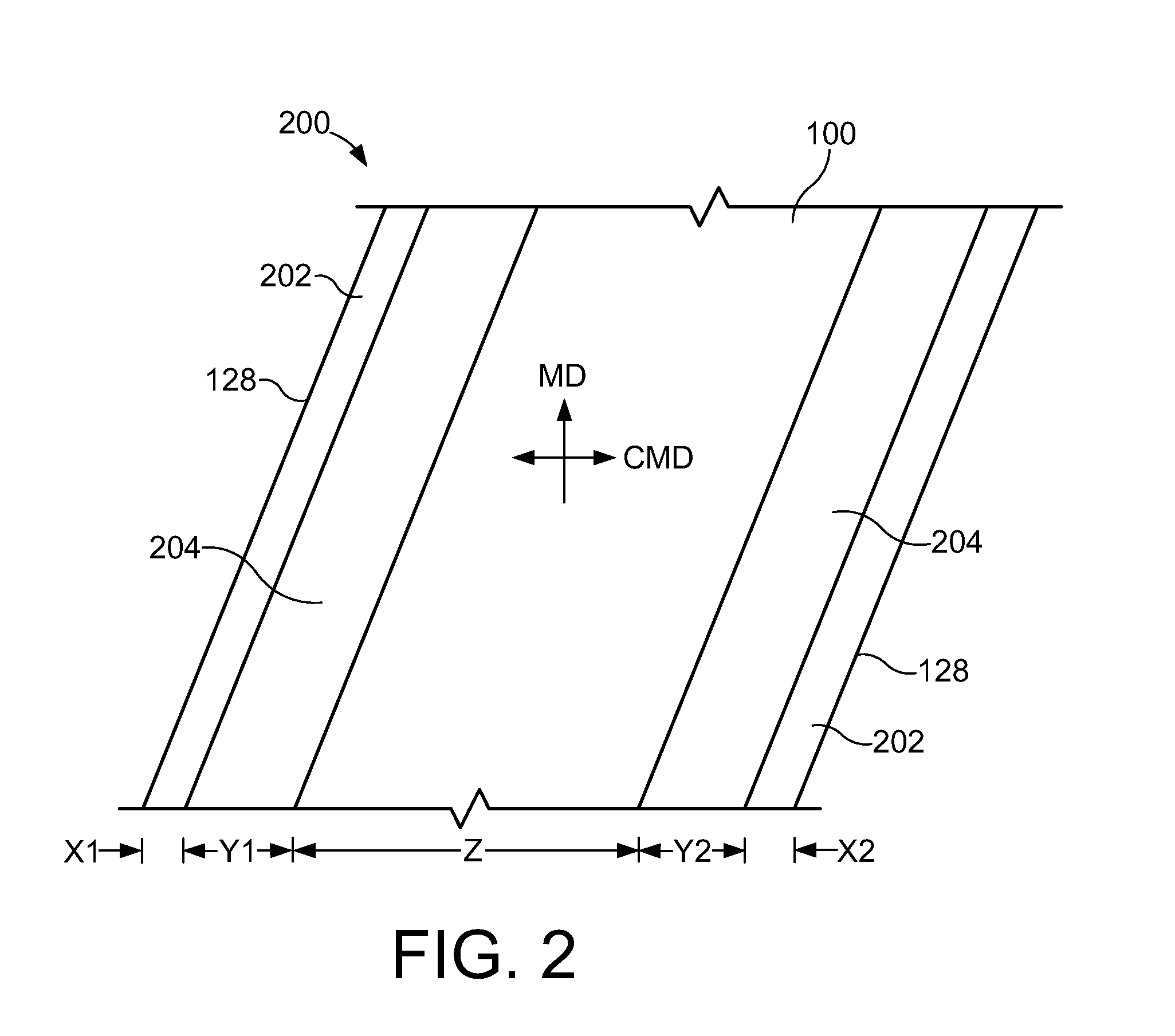[0010]The present invention provides a fabric including a spiral base fabric wherein the fabric comprises a non-marking spiral seam integrated with the body of the fabric, i.e., the seam and the base fabric are essentially the same. The base fabric incorporates conductive yarns and the edges are coated for 1″ with conductive
adhesive to complete the conductive grid. Furthermore,
silicon is custom coated on the board side edges (between the 1″ conductive edges). Custom coated for the narrowest boards produced, e.g., an 88″ wide belt and a presumed narrowest board of 48″, then the
coating will be 20″ on each edge (1″ for the conductive
adhesive and 19″ for the
silicon). The
silicon coating is flush with the surface of the fabric so that it does not mark the board and is soft and supple yet hard wearing. The silicon also helps pull the board through the machine at start-ups and after board breaks.
[0011]The invention in one form is directed to a monofilament base fabric incorporating conductive yarns and conductive edging, to complete the conductive grid. This fabric can provide one or more of the following advantages: heat and
hydrolysis resistant materials, providing light weight high strength fabrics, having a high permeability in the central portion of the fabric, a surface with a high
coefficient of friction due to the silicon coated edges on the board side of the belt. The present invention also relates to an integrated spiral loop seam integrated with the base fabric which can provide one or more of the following advantages: be an extremely stable and yet flexible corrugator fabric, with superior heat and
hydrolysis resistance and the ability to provide a non-marking loop seam, and board pulling power due to the silicon coated edges. The base fabric is a conductive spiral fabric that is coated on the board side edges of the fabric with a
silicon rubber compound. This provides the high traction (high
coefficient of friction) required. This characteristic is desired in a corrugator belt to pull the corrugated boxboard through the machine without any slippage. The non-marking seam is another desirable feature that this belt possesses. Further, because of the base structure, if the fabric is damaged in use then that particular damaged section can be removed and the fabric joined back together again and production is resumed relatively quickly. The conductive nature of the base fabric is required to prevent “shocking” of nearby personnel and also prevents fires that can be easily ignited in this environment with an electronic spark. This lighter weight design also requires less amperage from the
drive motor which is additional energy savings. Also, the monofilament / silicon structure requires less cleaning because it repels the
starch that is prevalent during the manufacture of boxboard. This is also an
economic advantage over traditional belts.
[0013]In view of the description noted above, the corrugator belt of the present invention possesses certain features such as strength, durability, dimensionally stable, and has a non-marking seam under all the conditions of high temperature steam, plus
high tension. Furthermore, the belts are flexible in the machine direction yet sufficiently stable in the cross machine direction so as to maintain close to the belt's original dimensions and facilitate the ability to be guided along its passage around the machine under the conditions described. More importantly, the belts are sufficiently permeable to allow the
evaporation of vapor to pass easily through the material so as not to rewet the corrugated box-board. Also, a non-marking seam, of the same caliper of the base fabric is desired, as in this case. Plus, silicon coated edges are provided to protect the exposed top belt when the board is narrower than the fabric, e.g., the top belt is 88″ wide and the narrowest board produced on a particular machine is 48″ wide, then the edges will be coated with silicon for 20″ on each board side. On the very edge, conductive
adhesive such as F-611 from Plastidip is applied to form the conductive grid with the conductive yarns in the center of the spirals.
[0014]However, corrugator belts exhibiting all of the above desirable features have heretofore not been available. Conventional corrugator belts exhibited
low permeability and used the principle of absorption and then
evaporation but problems of rewetting the corrugated box-board occurred which means the corrugator machine was restricted to speed because
drying was being restricted. Moreover, these types of belts were typically heavy and very low in permeability. Or, if a more
open design, i.e., higher permeability compared to traditional corrugator belts was employed, the board side edges were not protected from the wear that occurs from the exposed fabric to the hot plates and dried glue /
starch that makes a
sandpaper-like environment which leads to premature wear removal or poor edge bonding because the caliper of the fabric at the edges is smaller than the central portion of the fabric.
 Login to View More
Login to View More 


